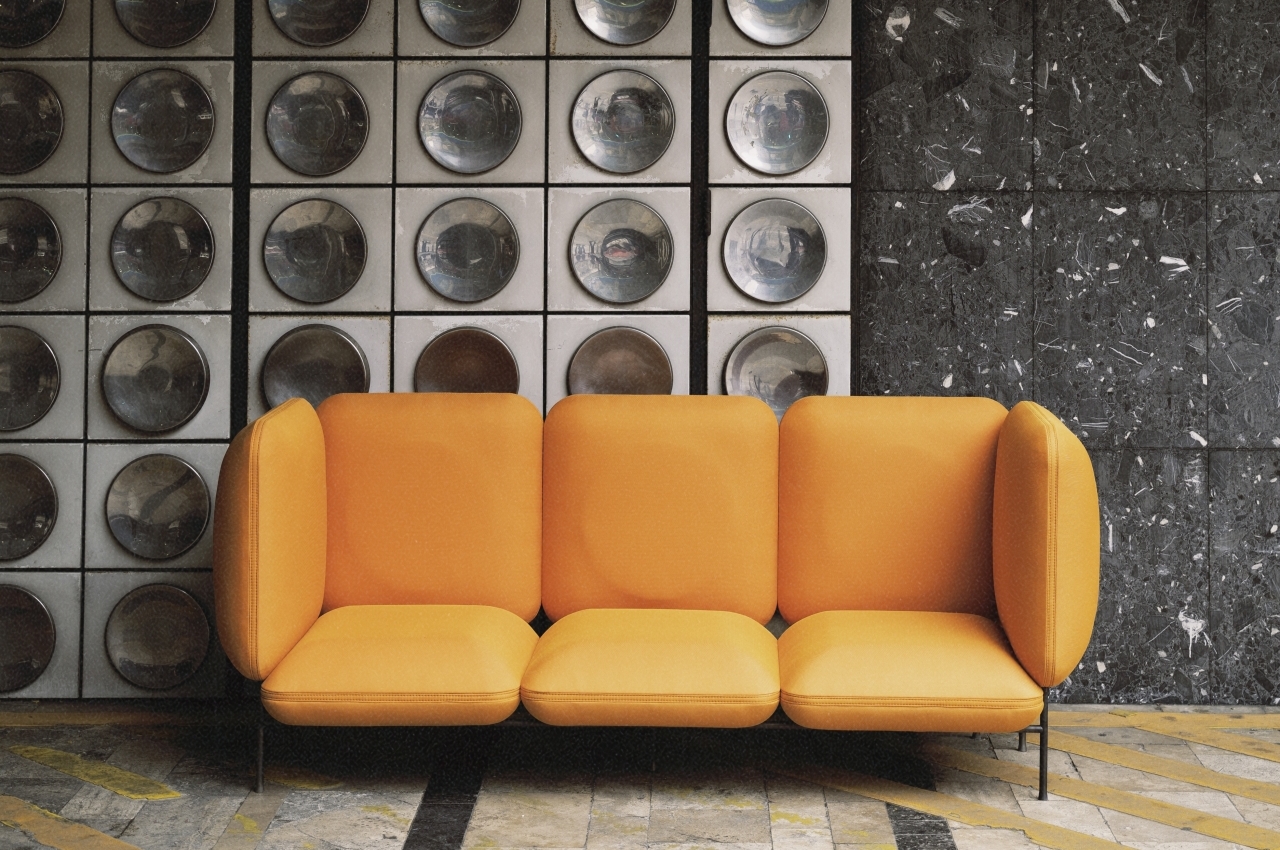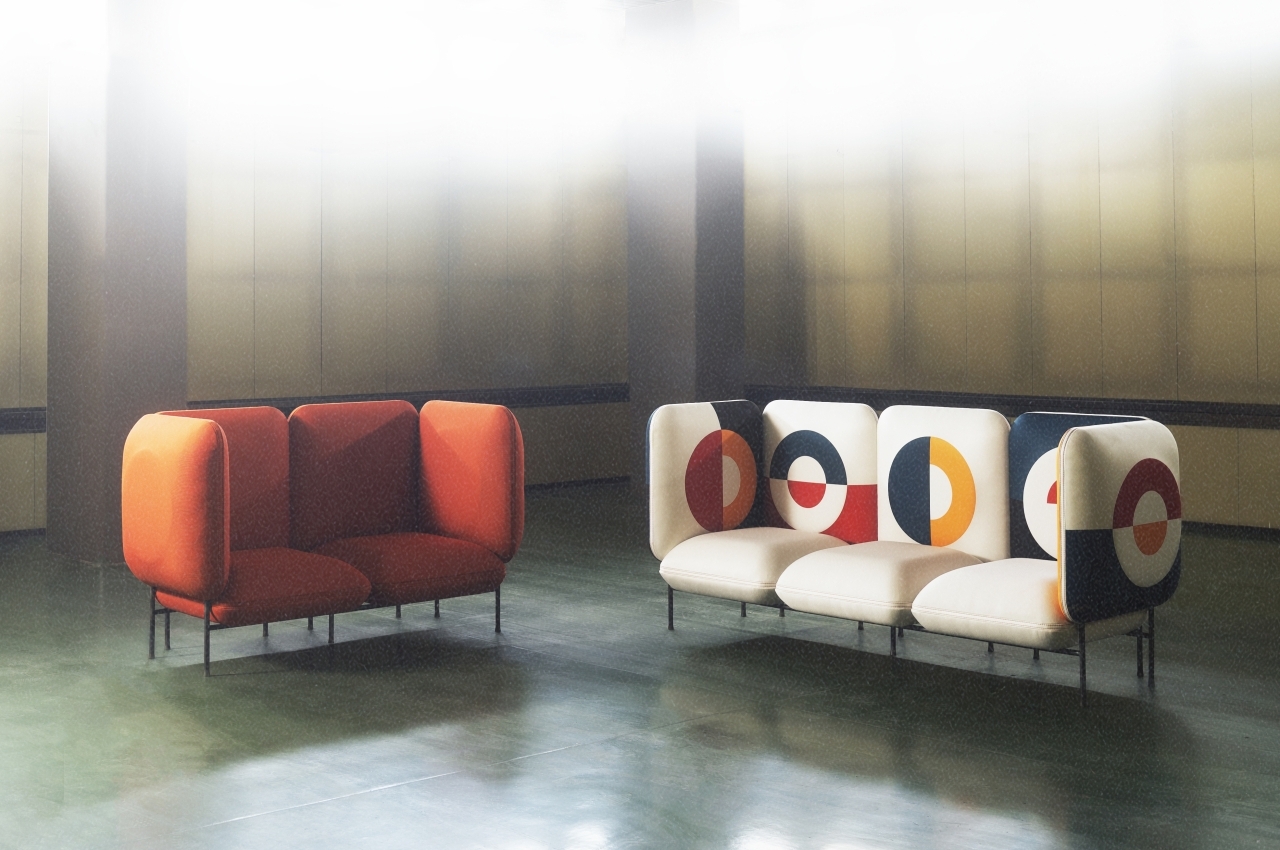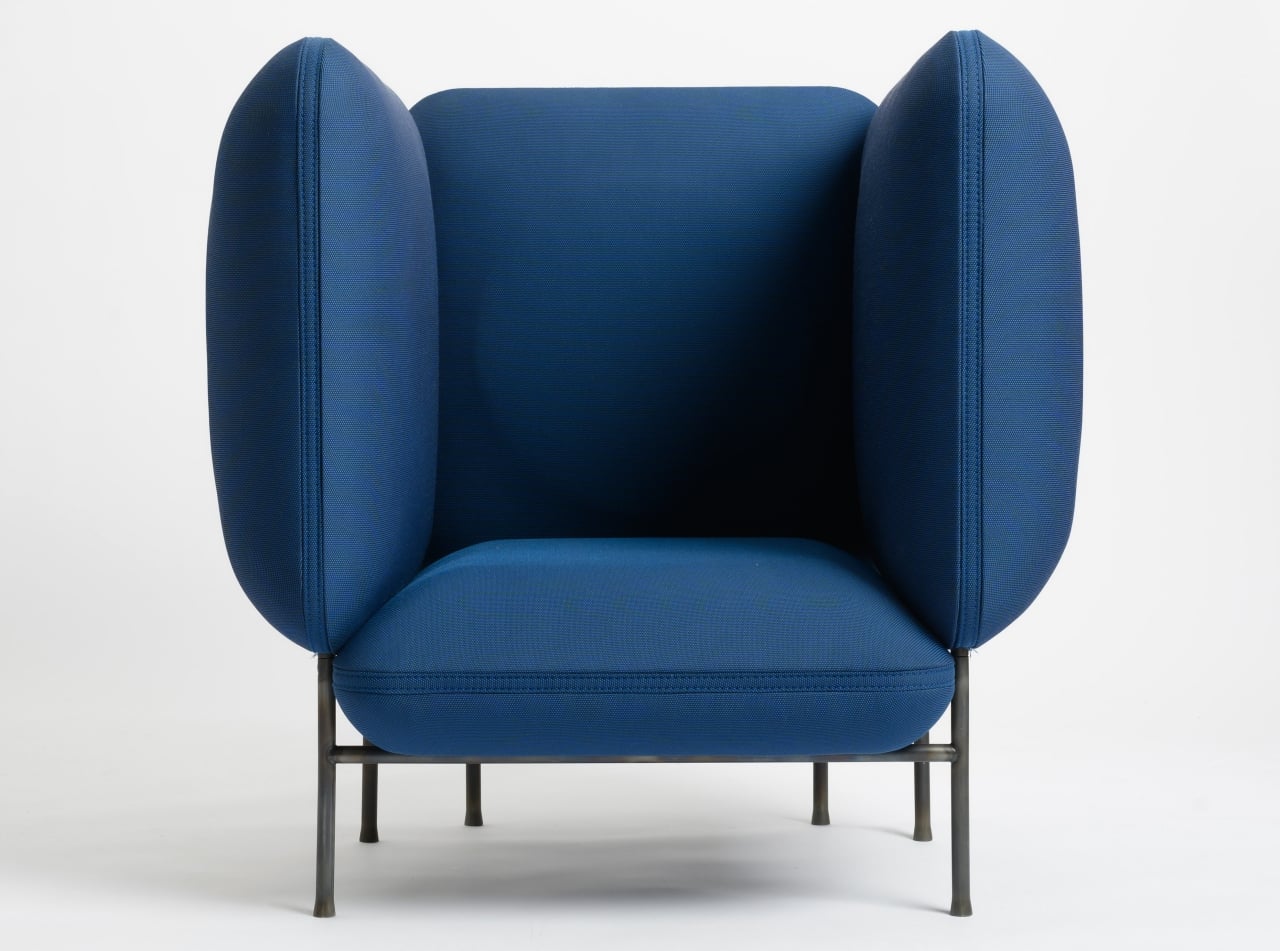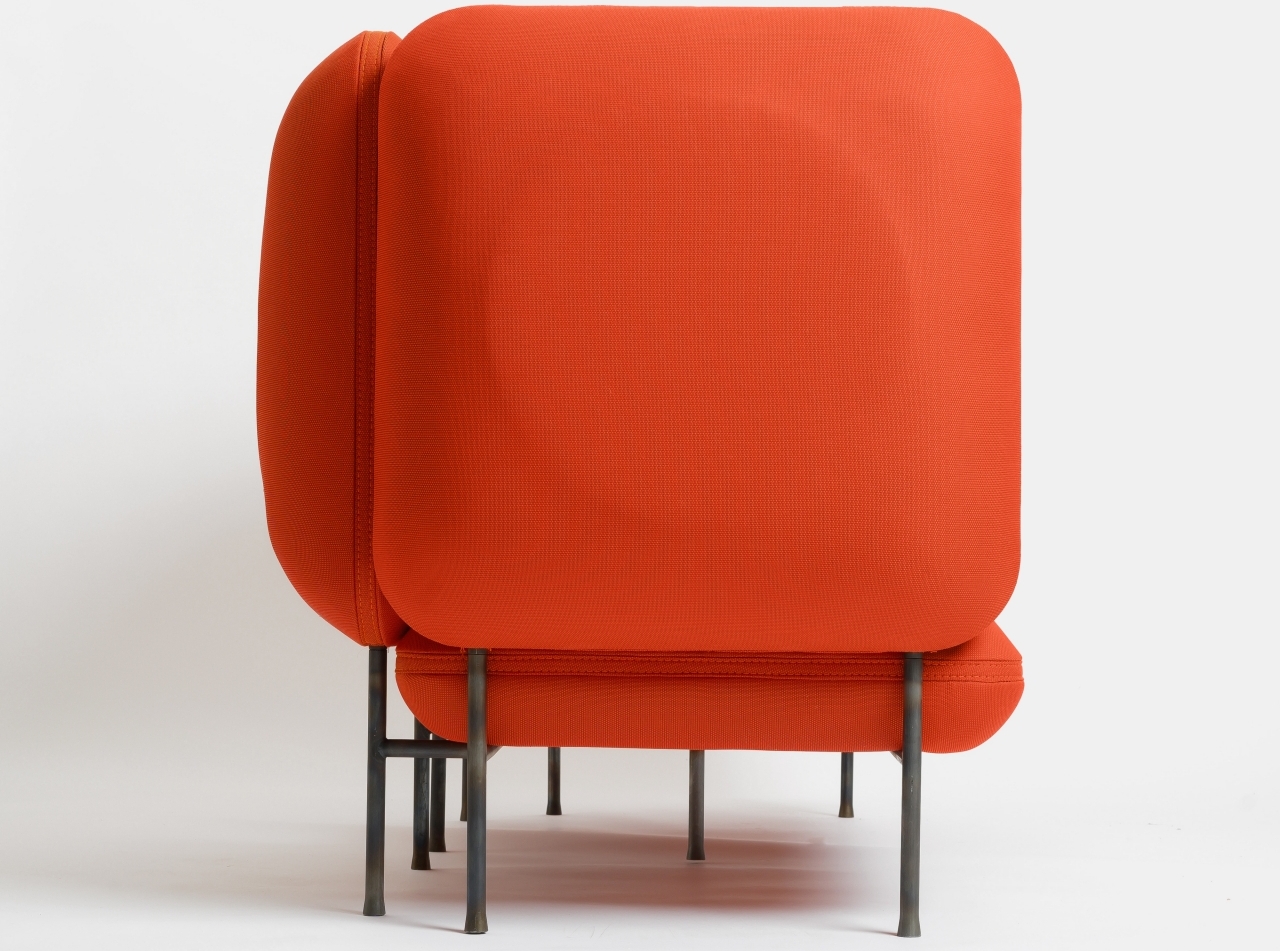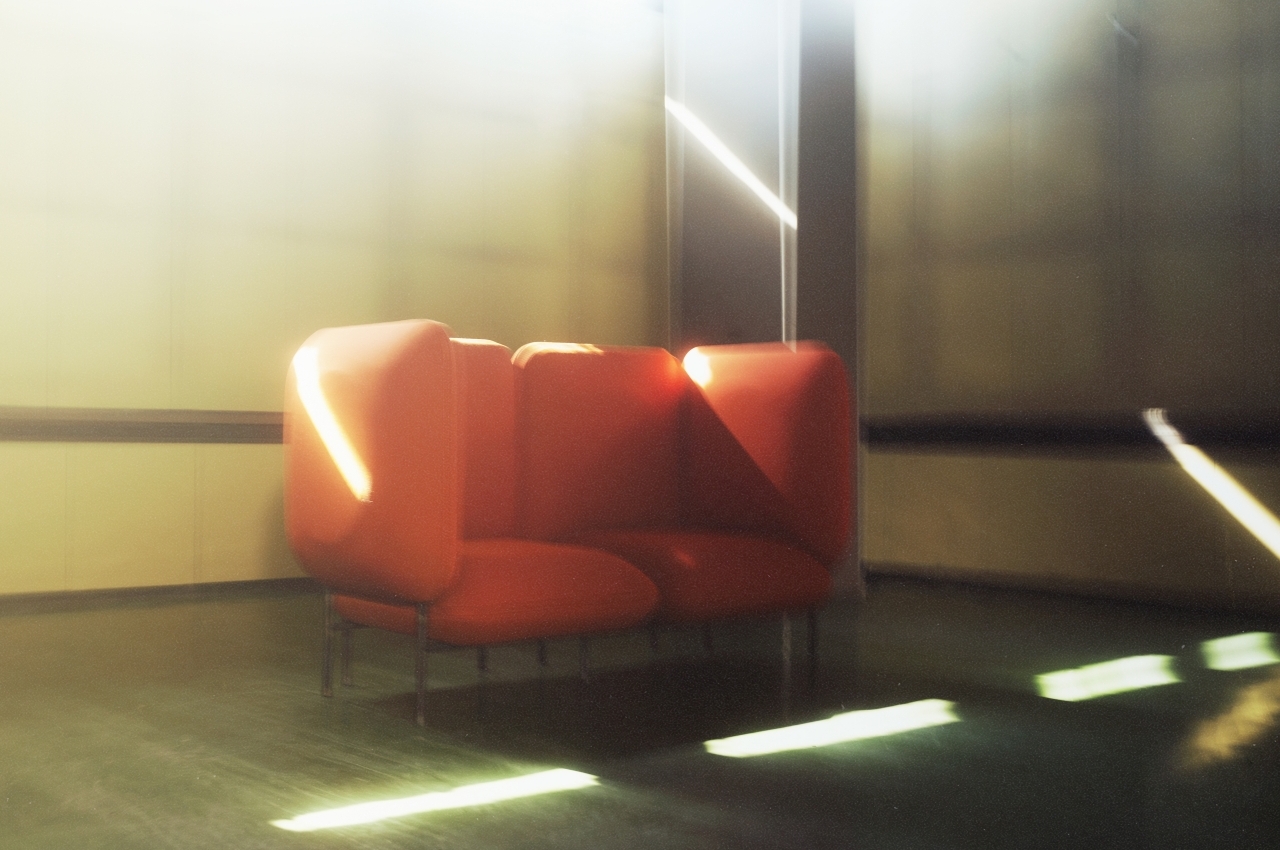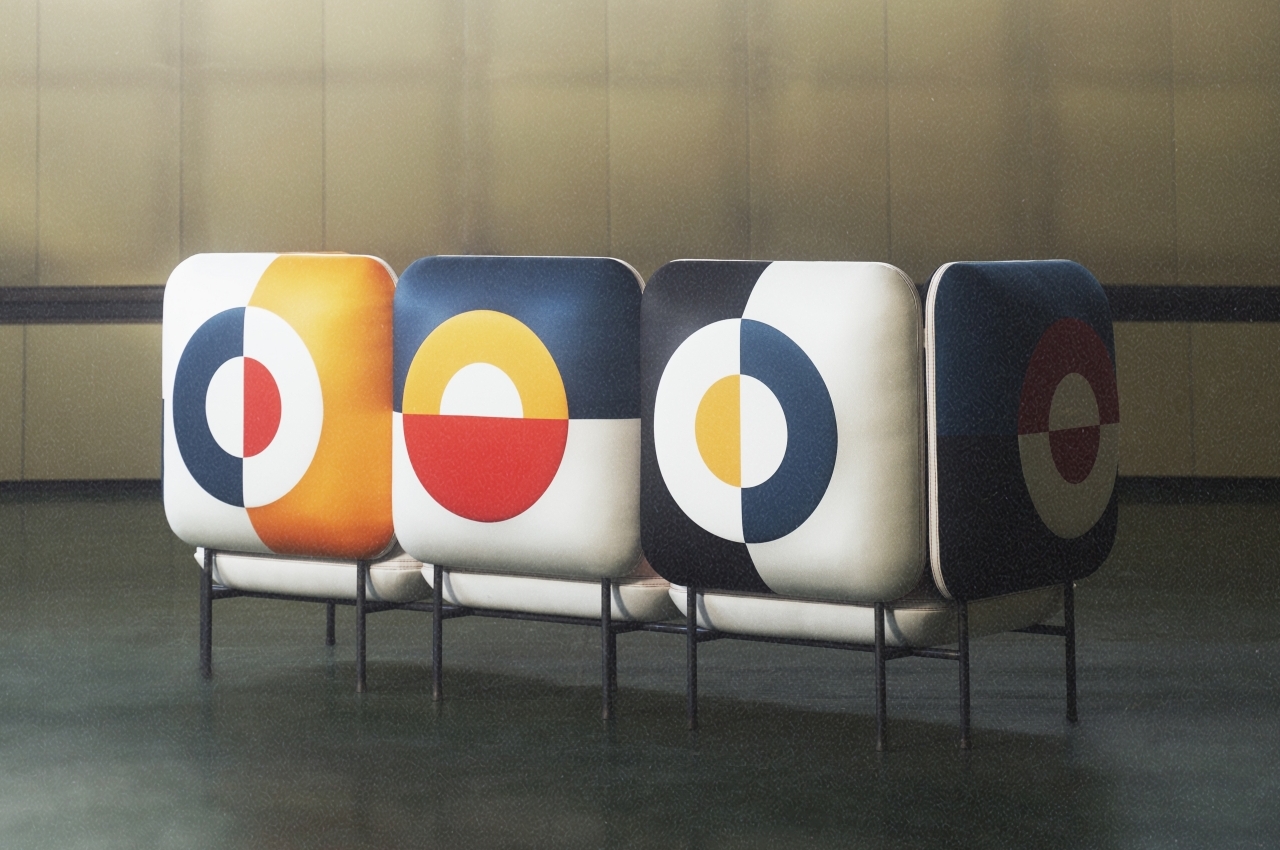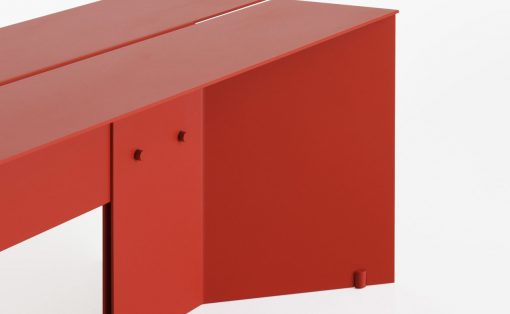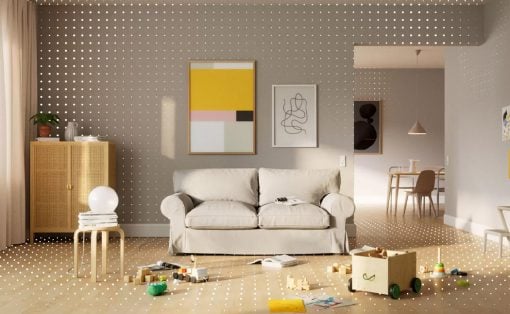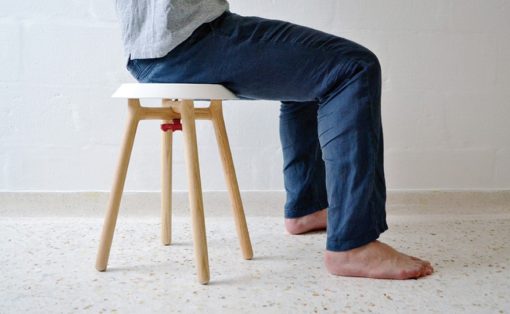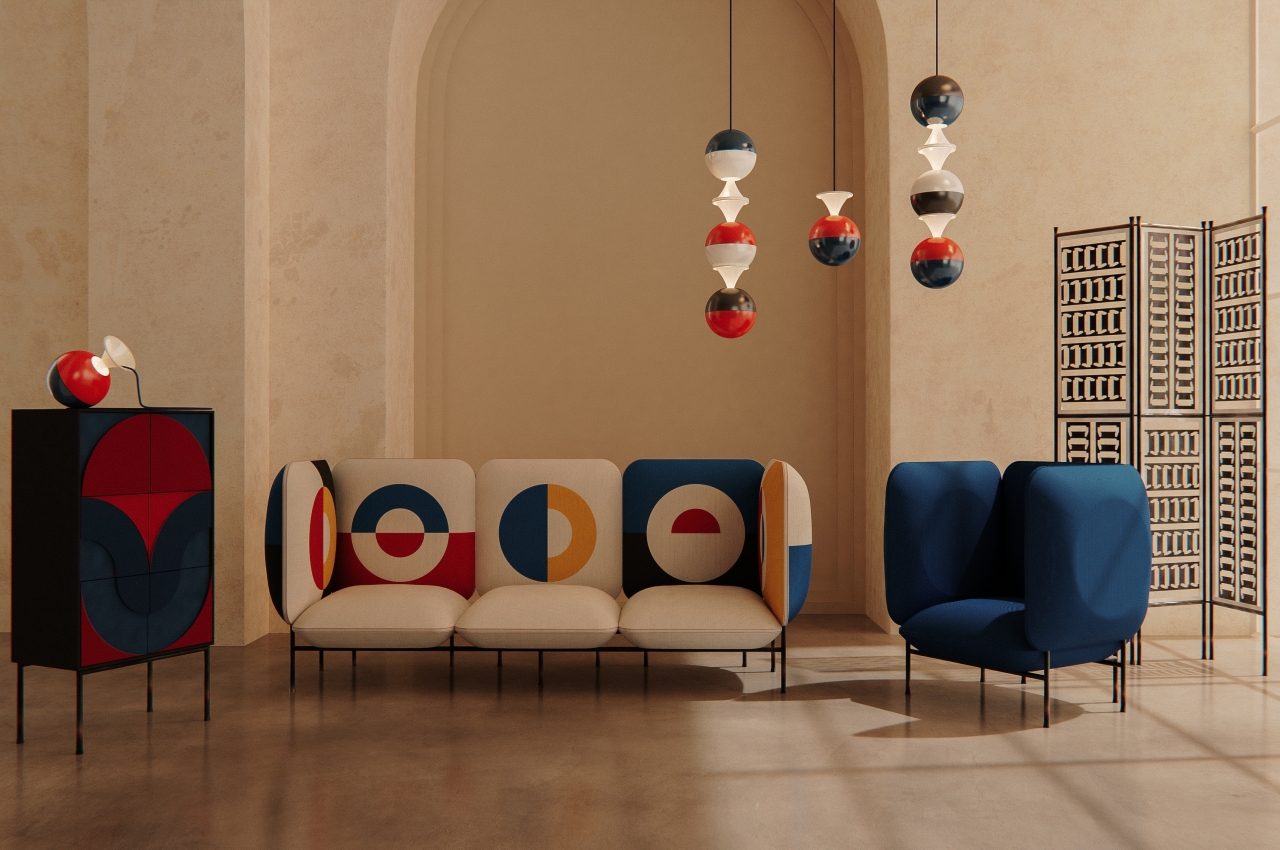
When people think of sofas or couches, many might think of very comfortable seating furniture you might even be able to sleep on. Others might actually find them stiff and unappealing, especially public ones that seem to be ironically designed to discourage lounging on them. And then there are sofas that seem to be more like art pieces to look at than something to sit on. Of course, there’s no reason why a sofa can’t be both an artistic expression as well as a piece of comfortable furniture, and the Dedas seating system brings that possibility into the real world, with a lot of help from the Hungarian designers and artists that represented the culture in the Bauhaus movement.
Designer: Annabella Hevesi

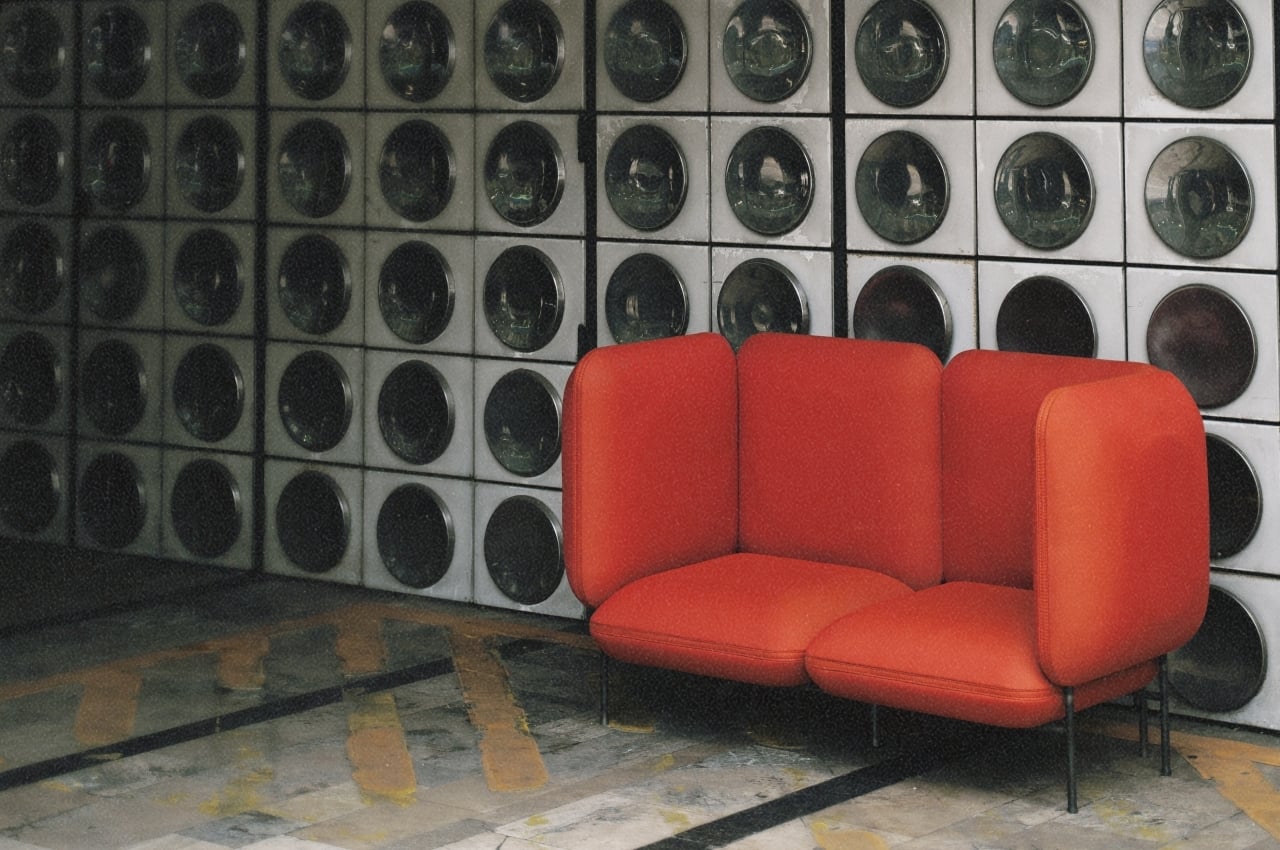
The seating system is made up of one, two, and three-seater sofas of different designs and colors, but its flagship variant reflects the art style that serves as both the inspiration and impetus for the entire furniture collection. Taking a few pages from Hungarian artist Ferenc Lantos’ “circle in square” motif, Dedas employs the typical geometric patterns and alternating colors associated with the Bauhaus style to create a visually interesting piece of furniture. But more than just simply taking those same shapes and putting them on the sofa’s backrest, the design takes a softer approach by using only horizontal and vertical lines to bisect the circles and employs rounded corners for the squares.
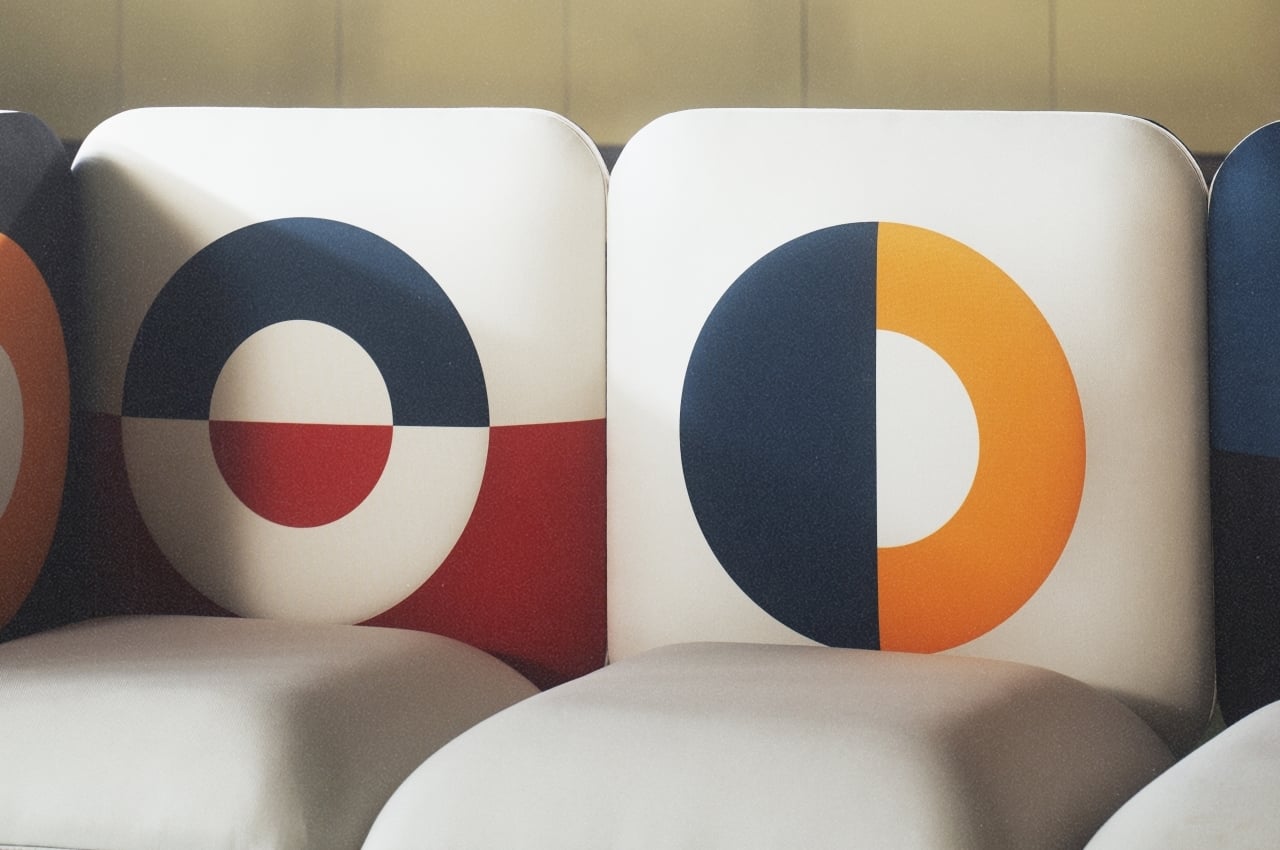
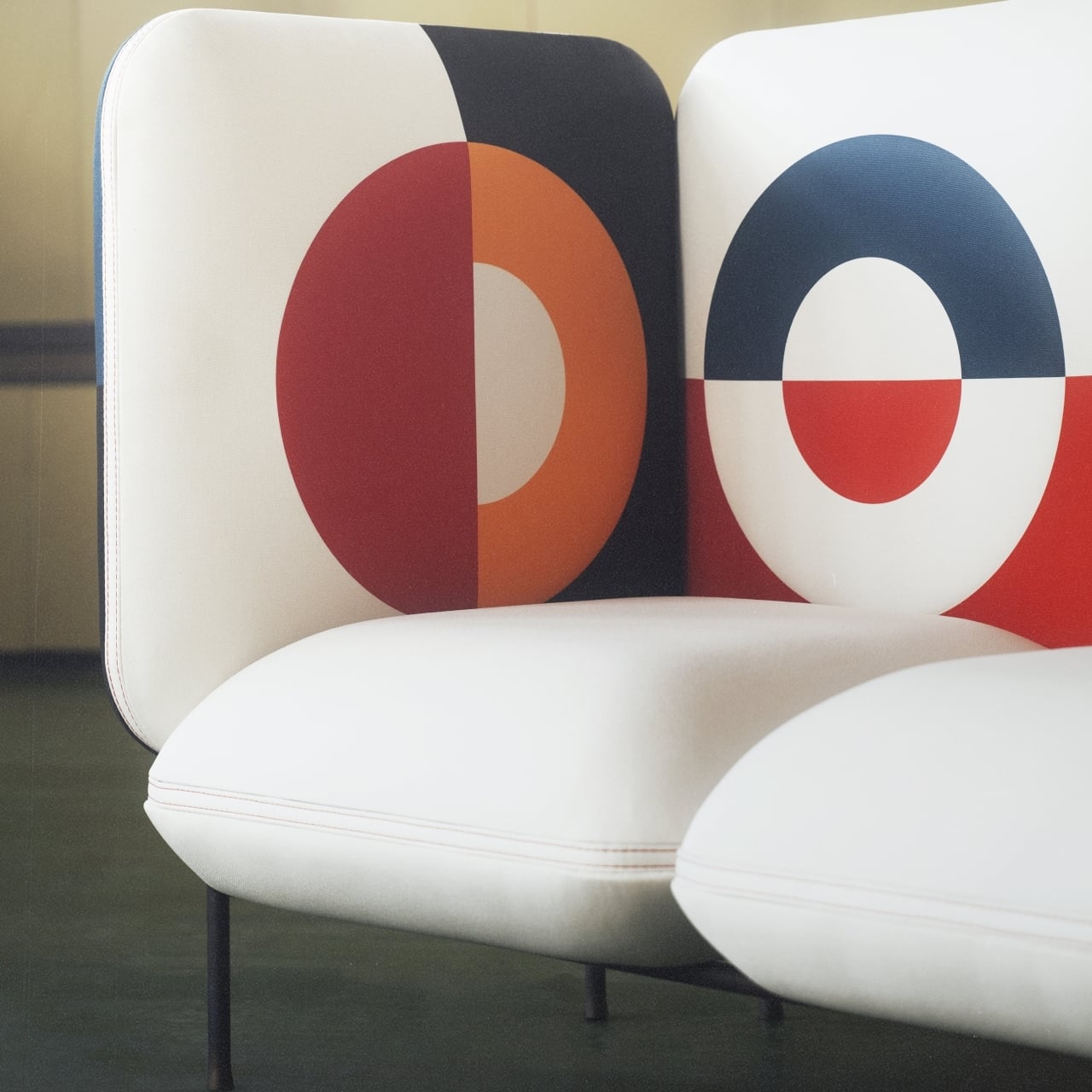
In contrast to the almost playful and artistic design of the backrest, there is a sense of efficiency and constraint in the way the entire sofa is constructed. The square shapes clearly mark areas where one should sit, and the rather tall sides enclose people in a more intimate and private space, even in a public setting. For extra effect, there is a three-seater model that has even taller backrests that would seem to climb up the wall, presuming you have the sofa set against one.
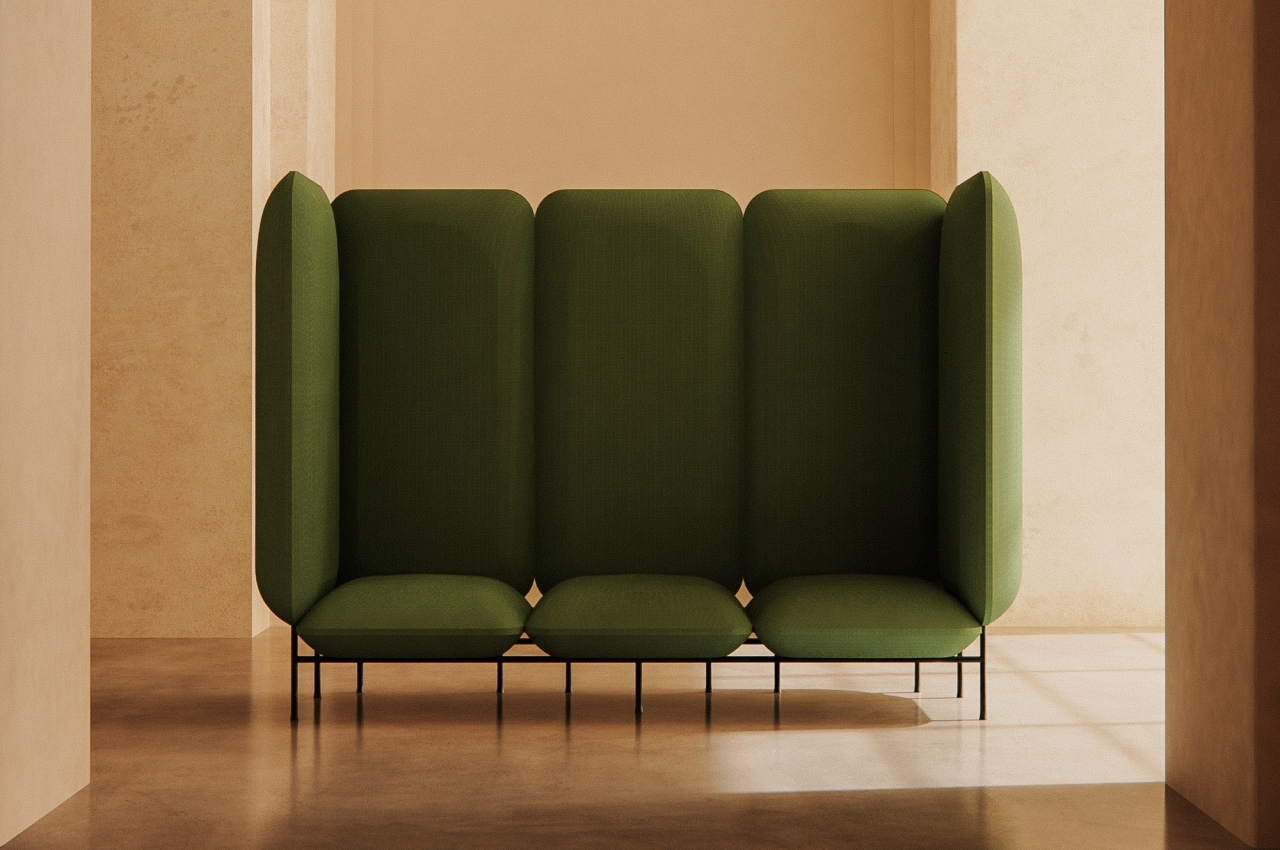
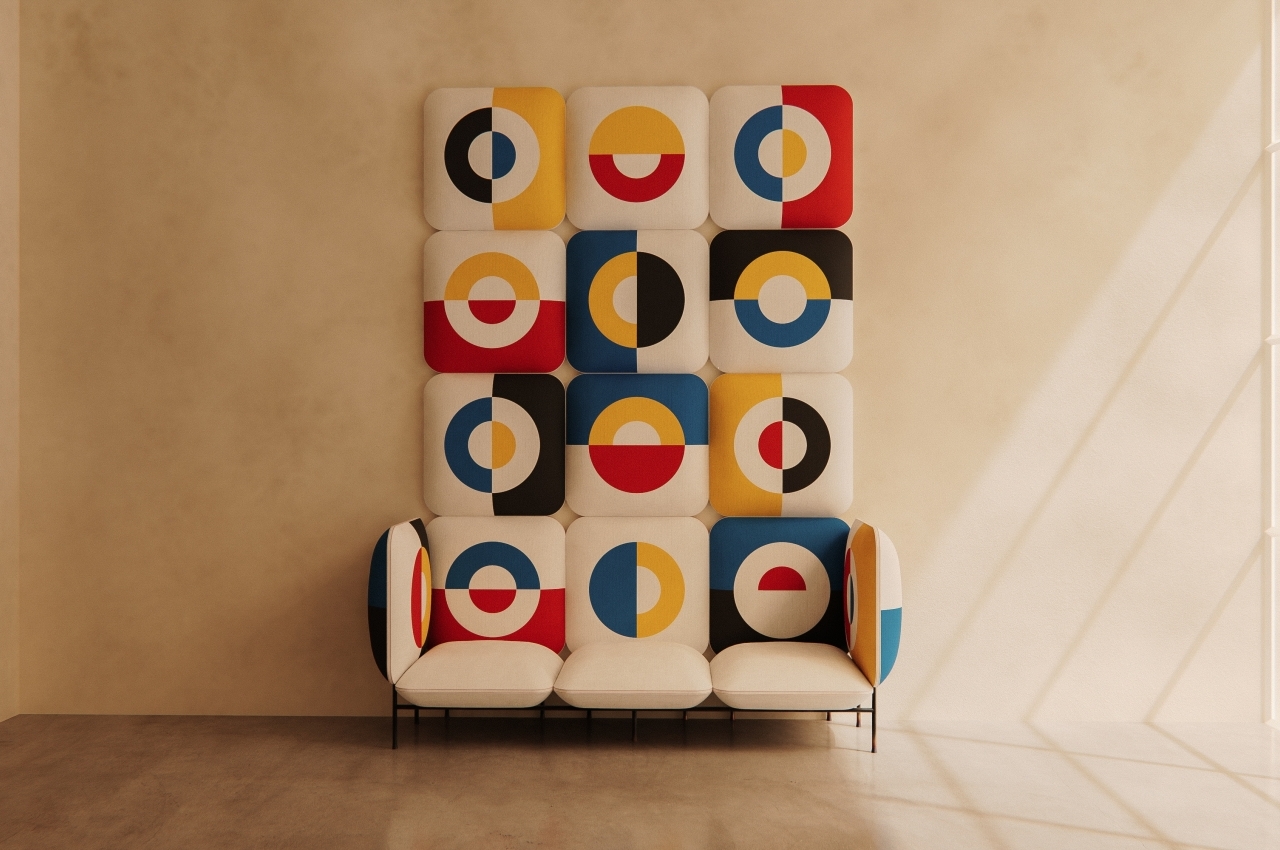
A very interesting aspect of the Dedas sofas is the upholstery’s hexagonal weaving structure. Since it has no stated direction, the fabric easily stretches even over the curved parts of the backrest, leaving no excess material and creating a seamless surface. The fabric is made using “Cradle to Cradle” CLIMATEX material, making it 100% recyclable when the sofa reaches its end of life. The foam for the filling is said to be made almost entirely of recycled foam, and its cut foam structure means there is no need for expensive and wasteful casting.
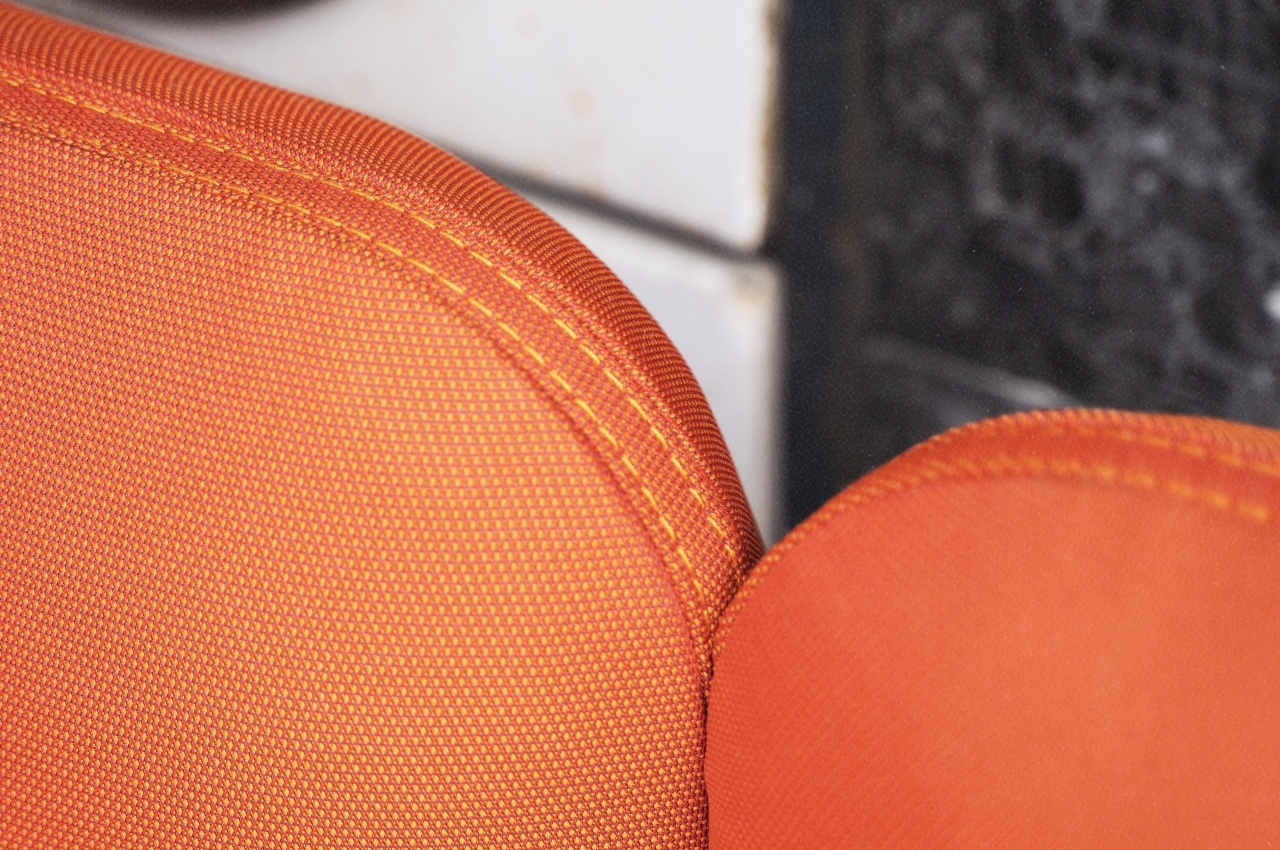
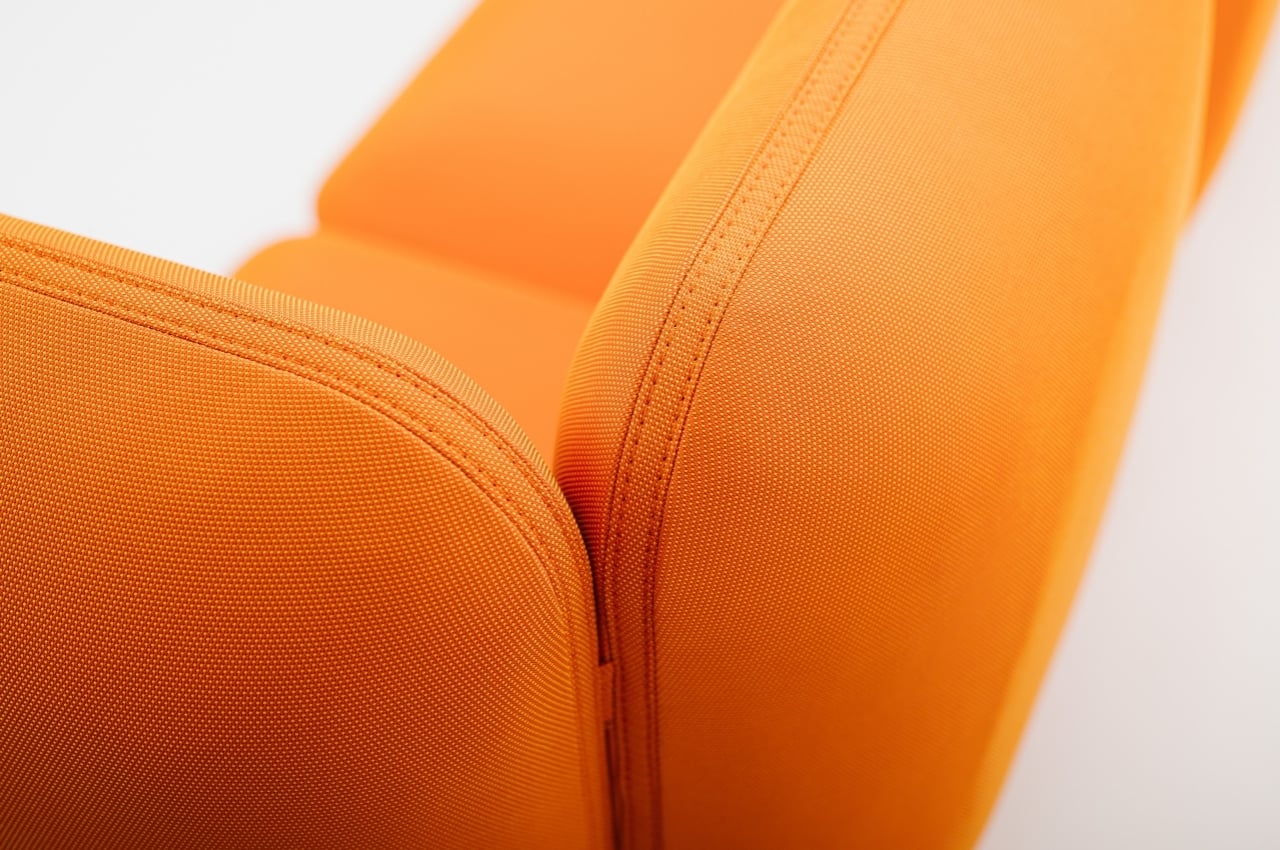
Compared to the cushions, the legs are almost invisible but are still distinctive with their iridescent finishing and unique patination. This appearance is achieved through a burning process that would call to mind enameled artworks, especially those from Hungarian Bauhaus artists. This design happens to also be more environment-friendly compared to plastic-based powder coating methods.

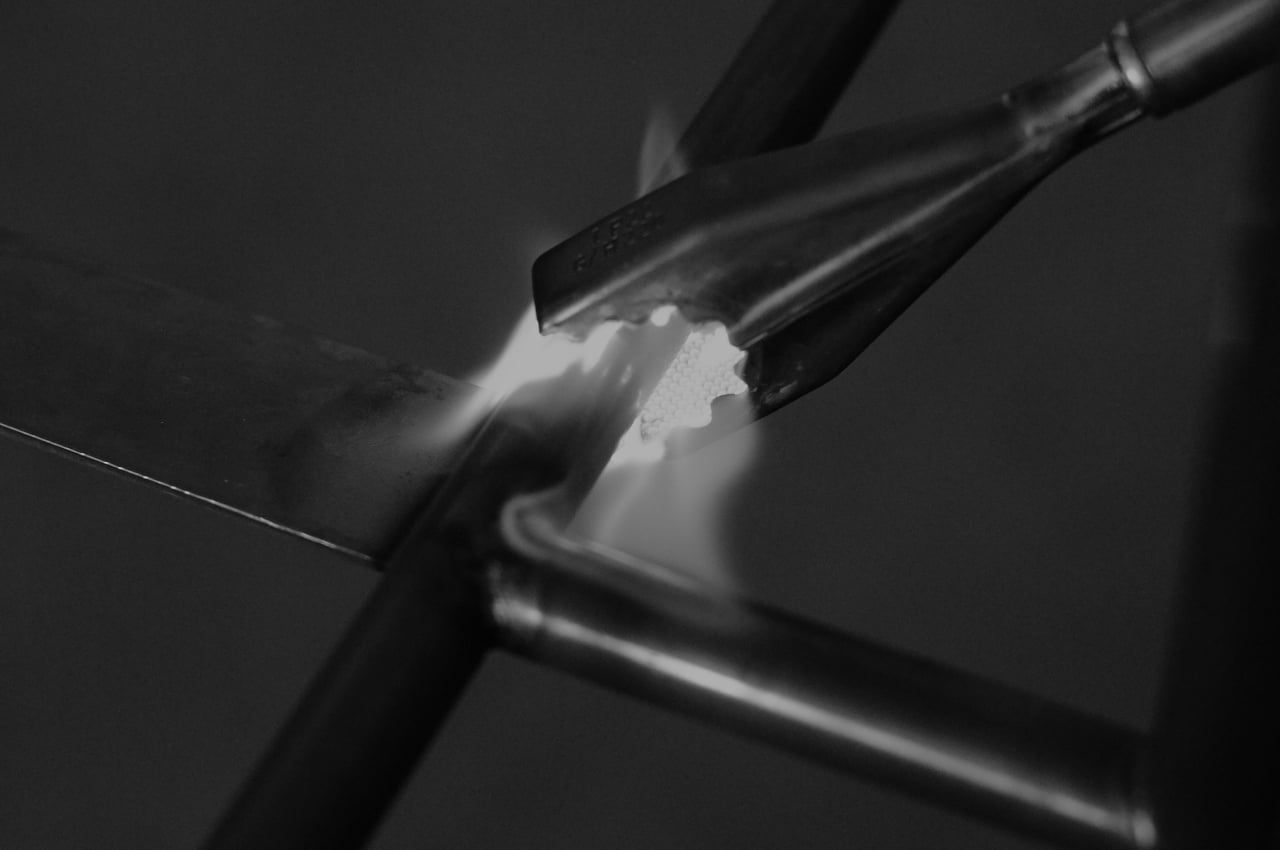

Furniture doesn’t have to be functional pieces of equipment only. They can also be an expression and a reflection of one’s unique traits. That includes one’s culture and history, which is often a smorgasbord of the artistic, socio-political, and economic landscapes of times gone by. Dedas and the designer’s entire Burnt Collection attempts to bring those influences to light, especially from Hungary’s rich cultural past. The result is a beautiful set of sofas for public spaces that bring some bodily relief and visual and mental satisfaction.
